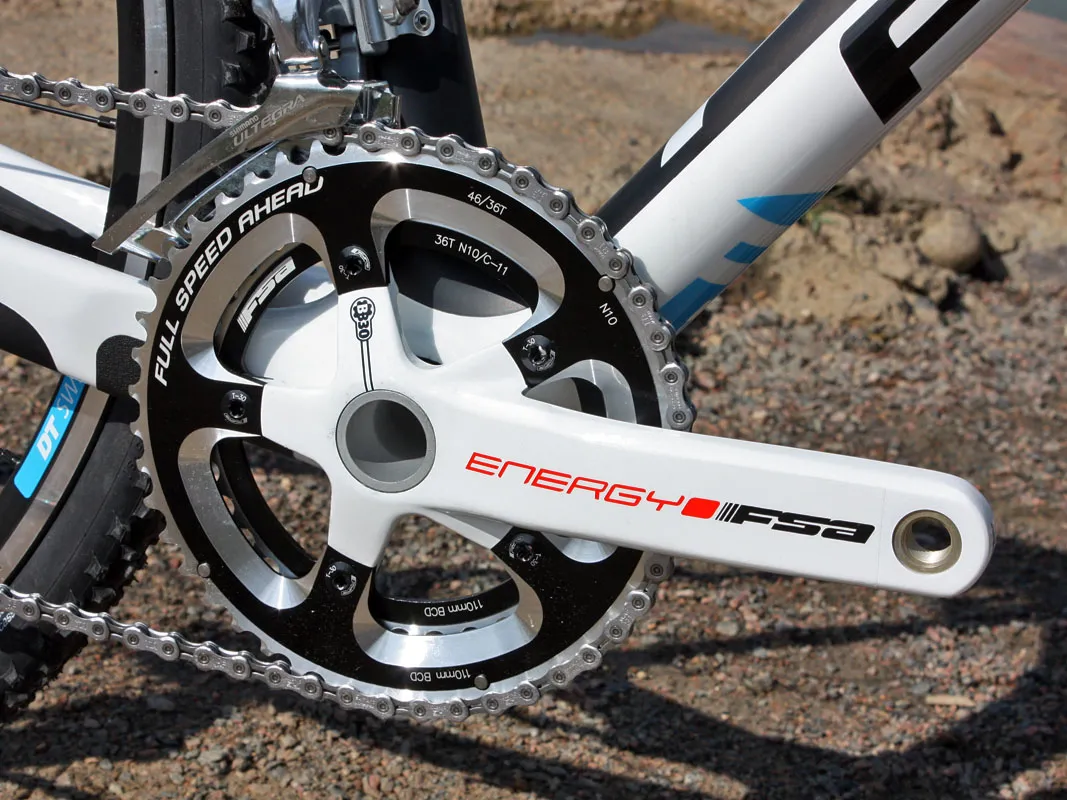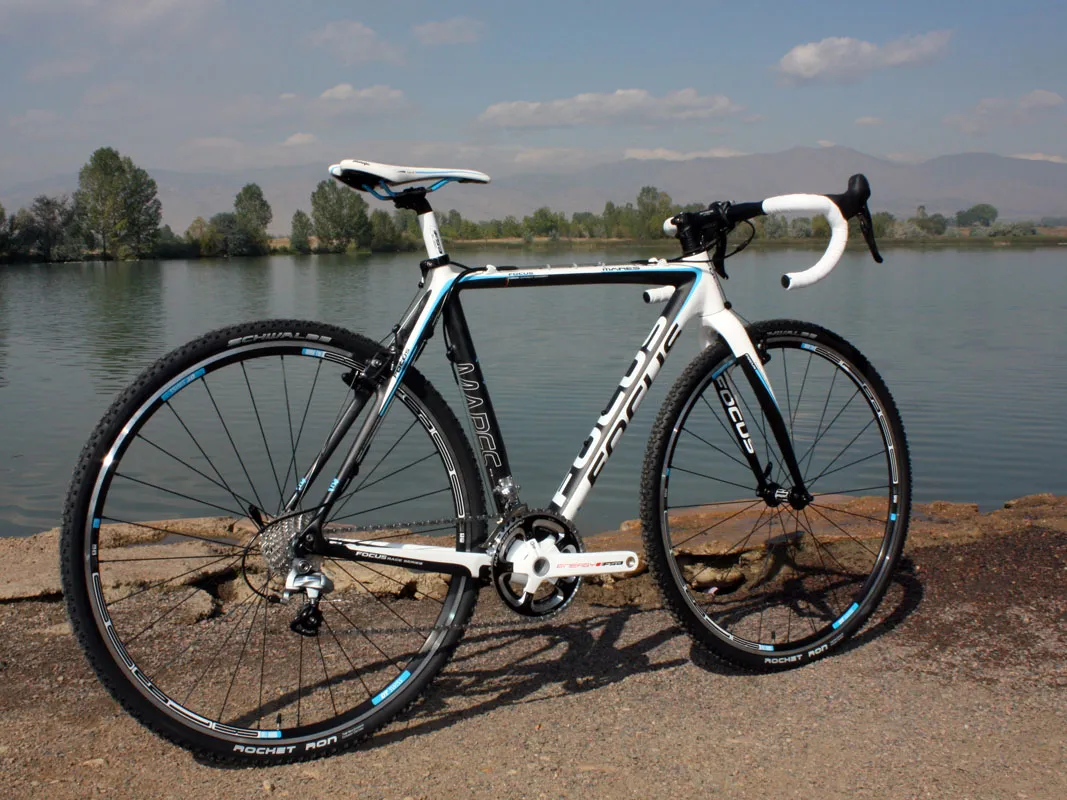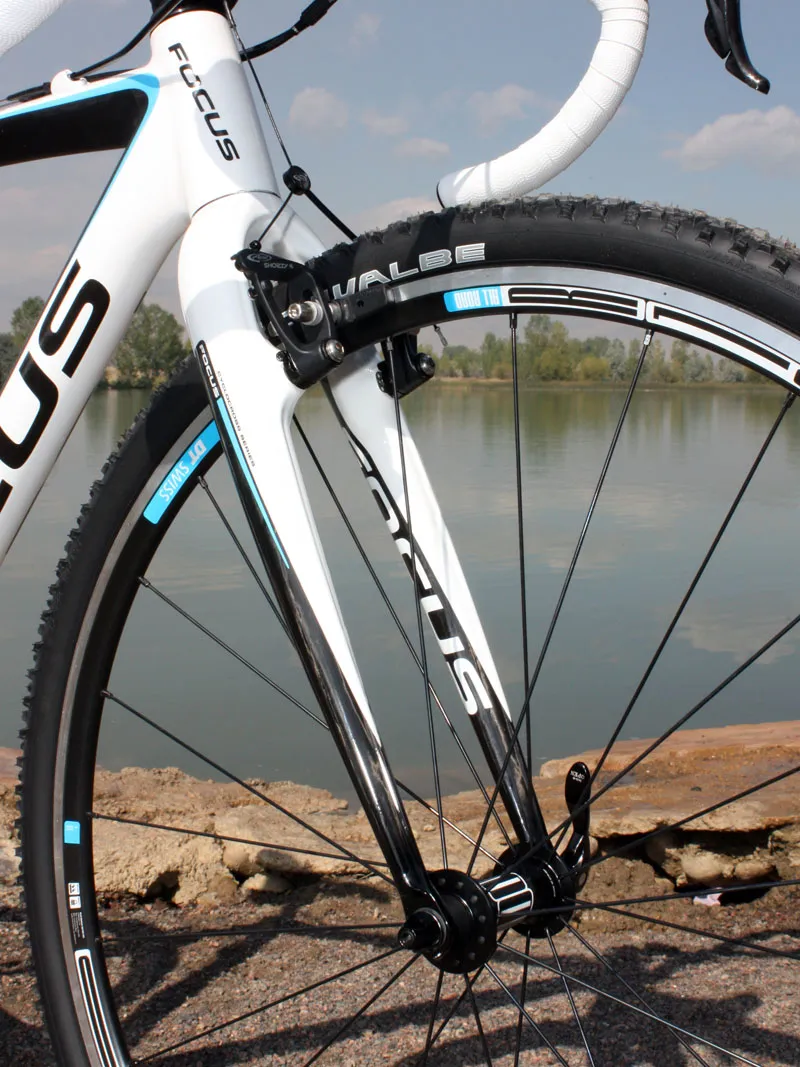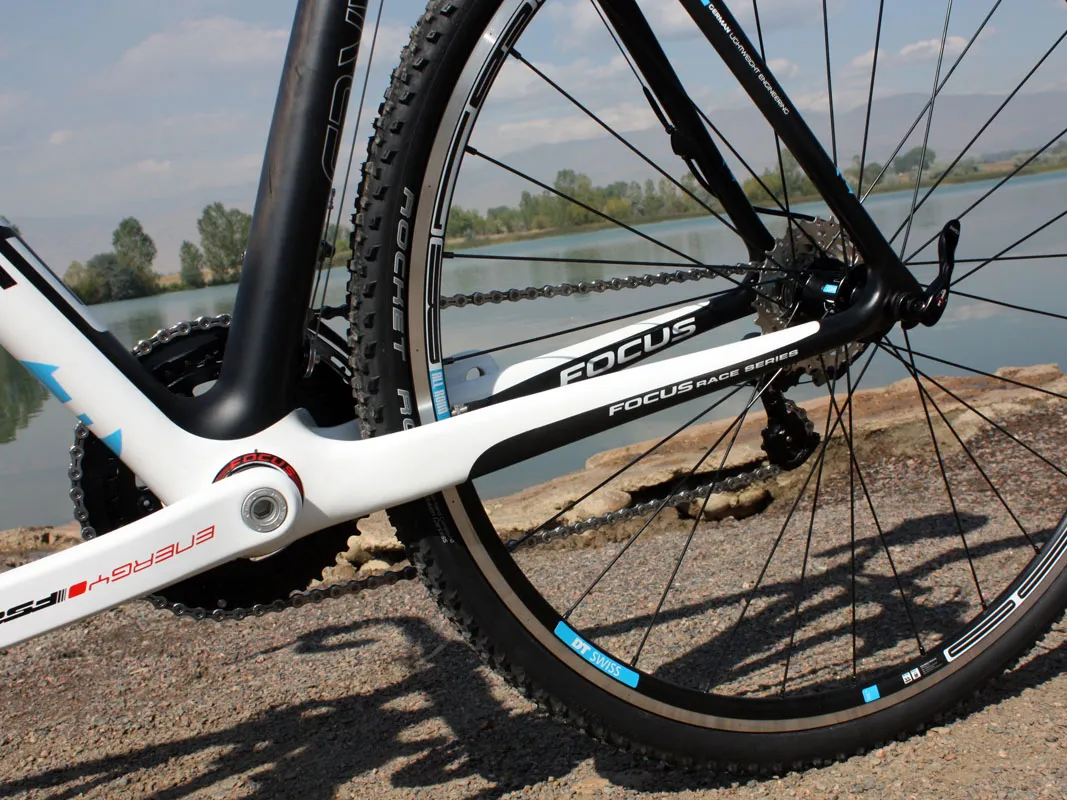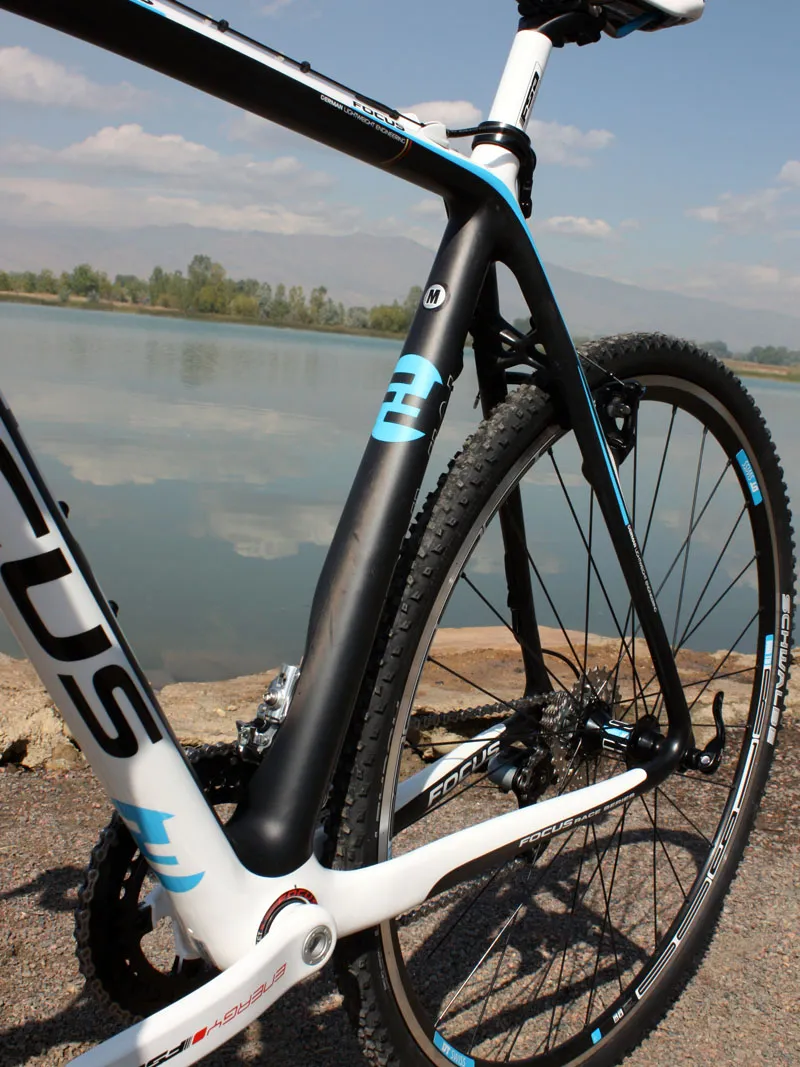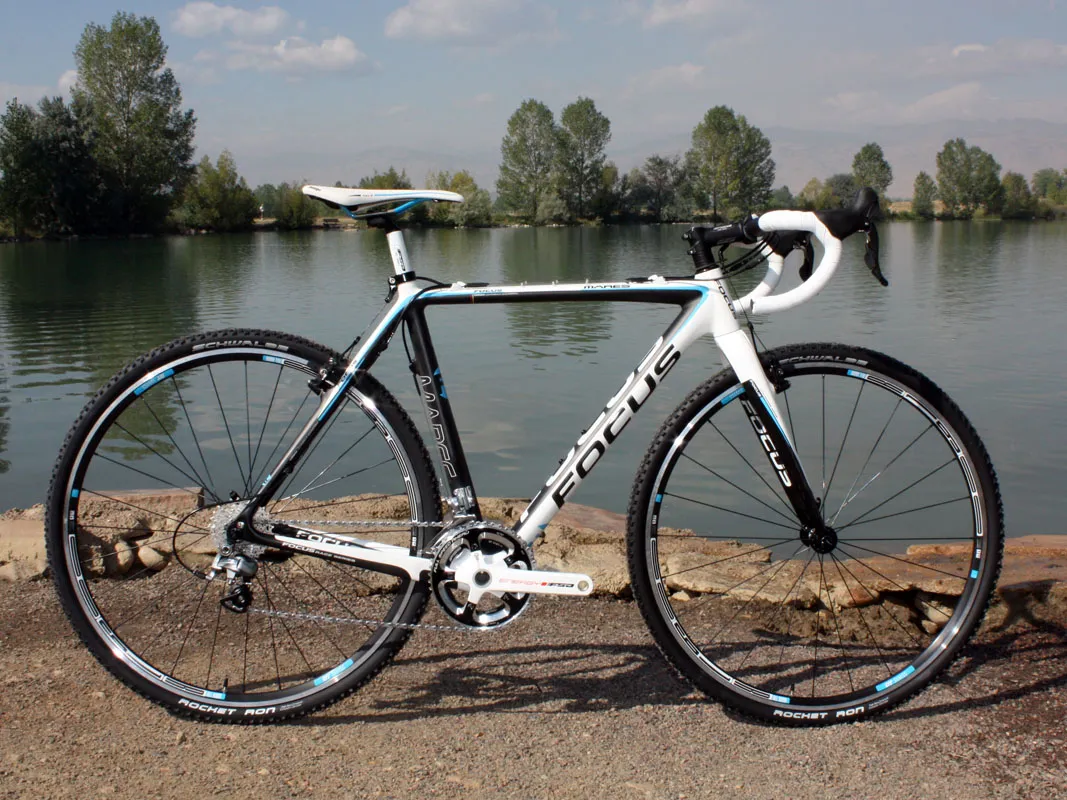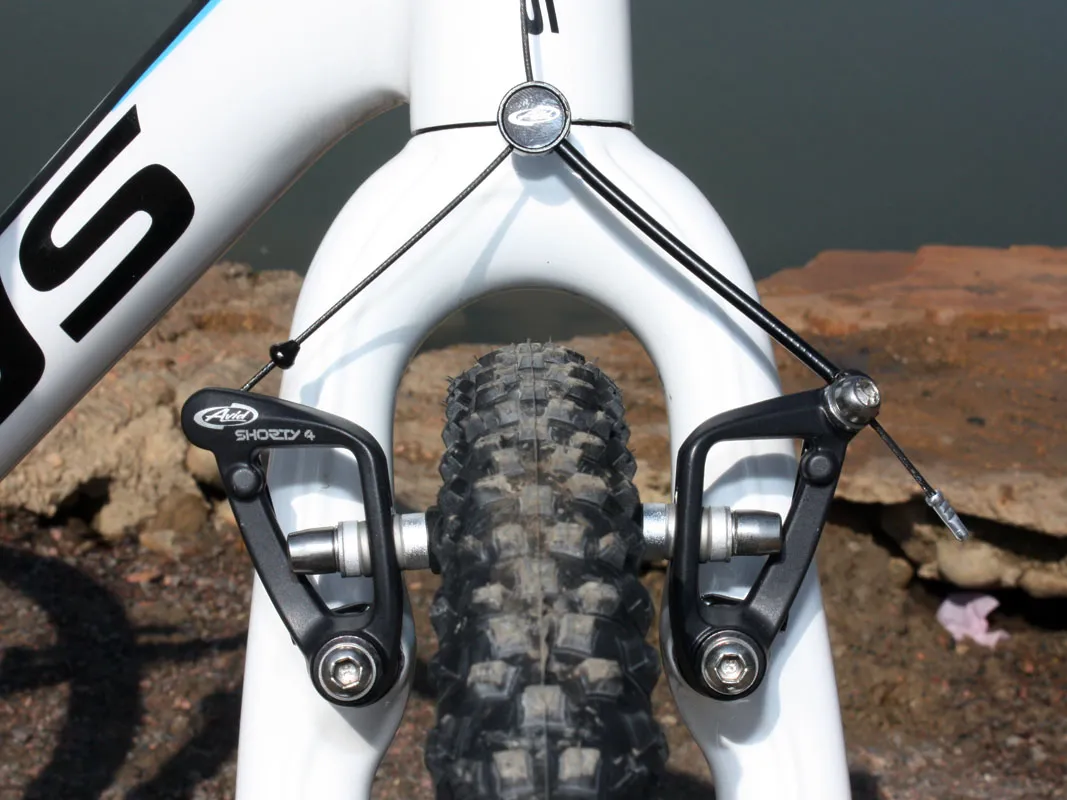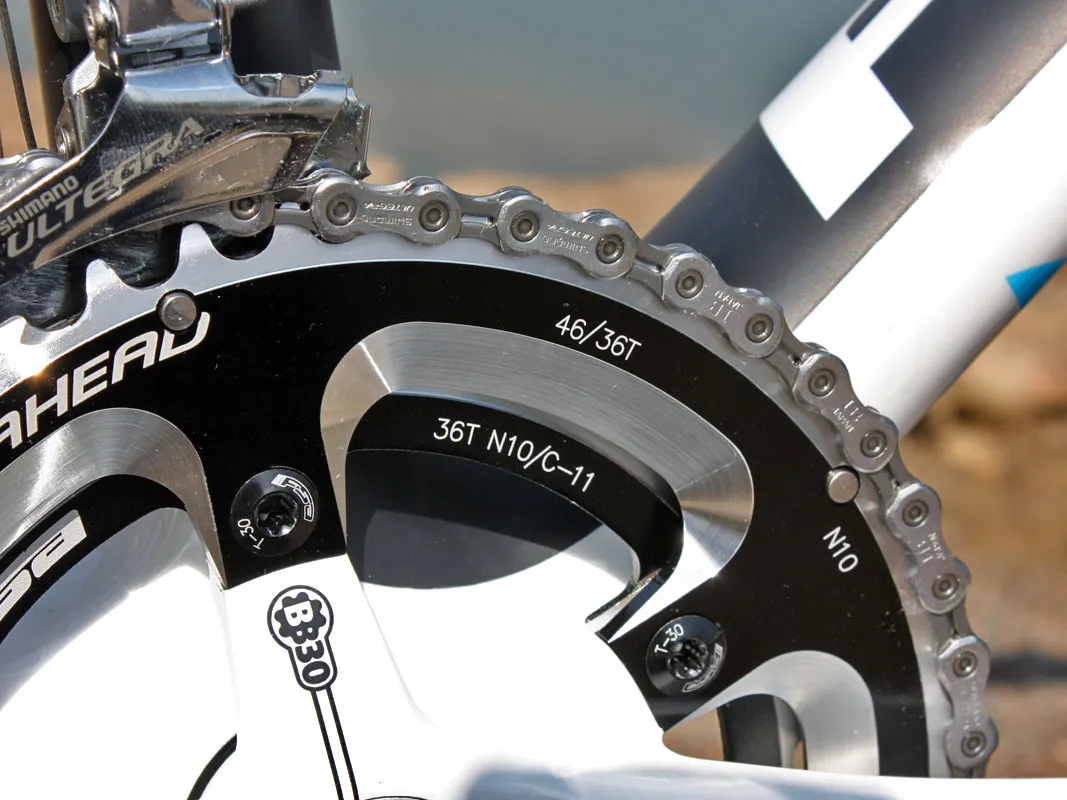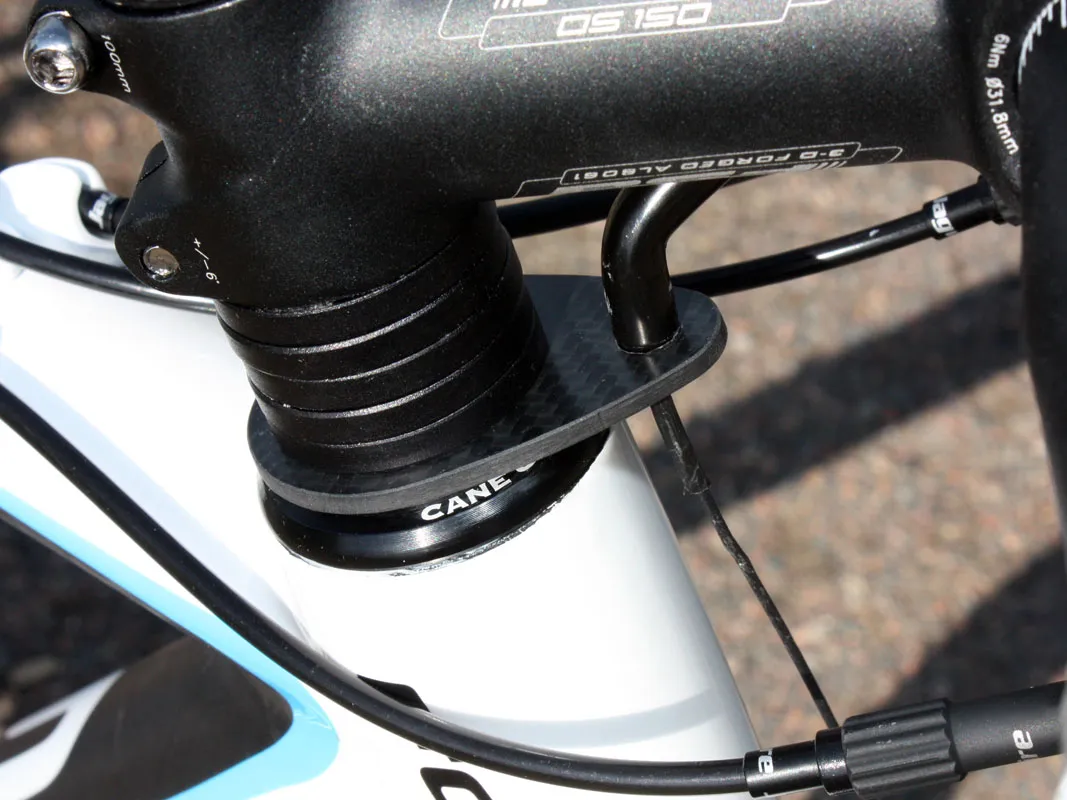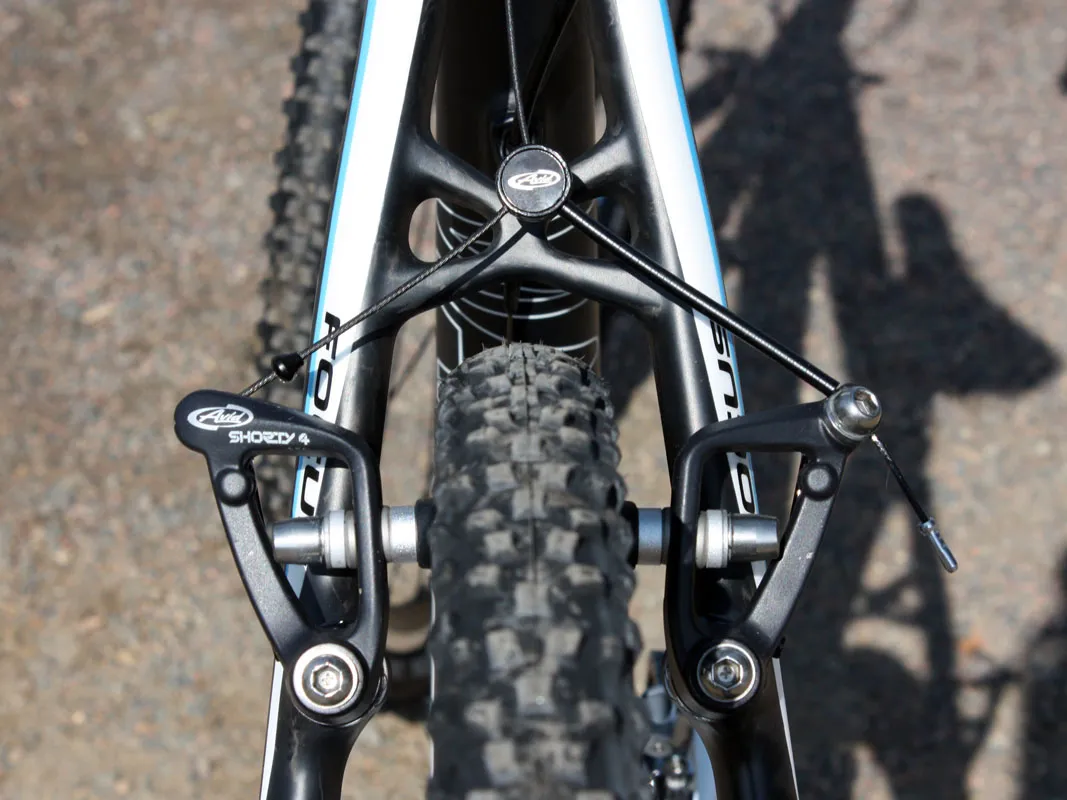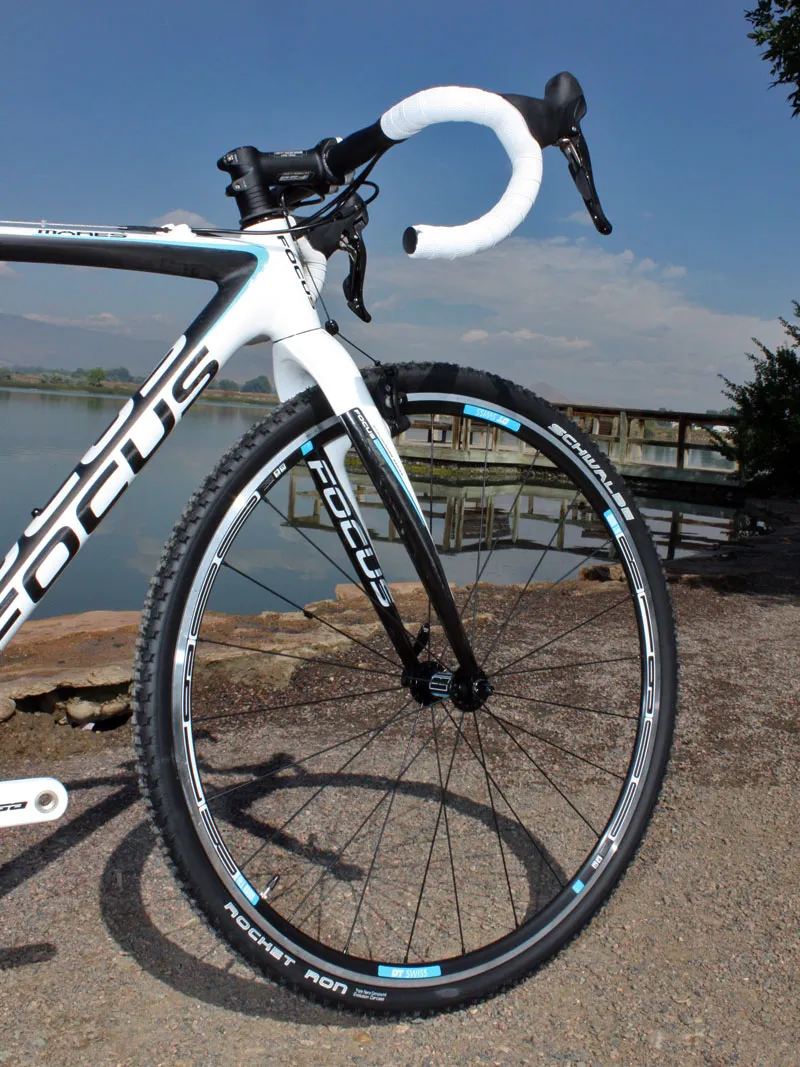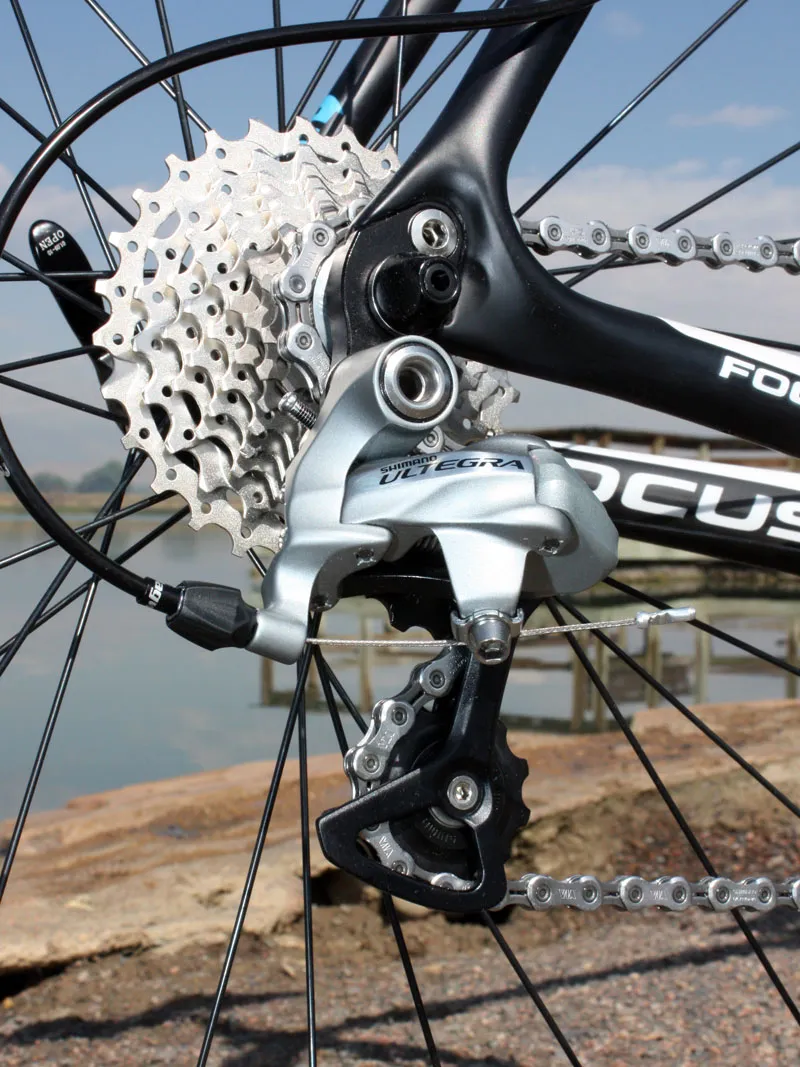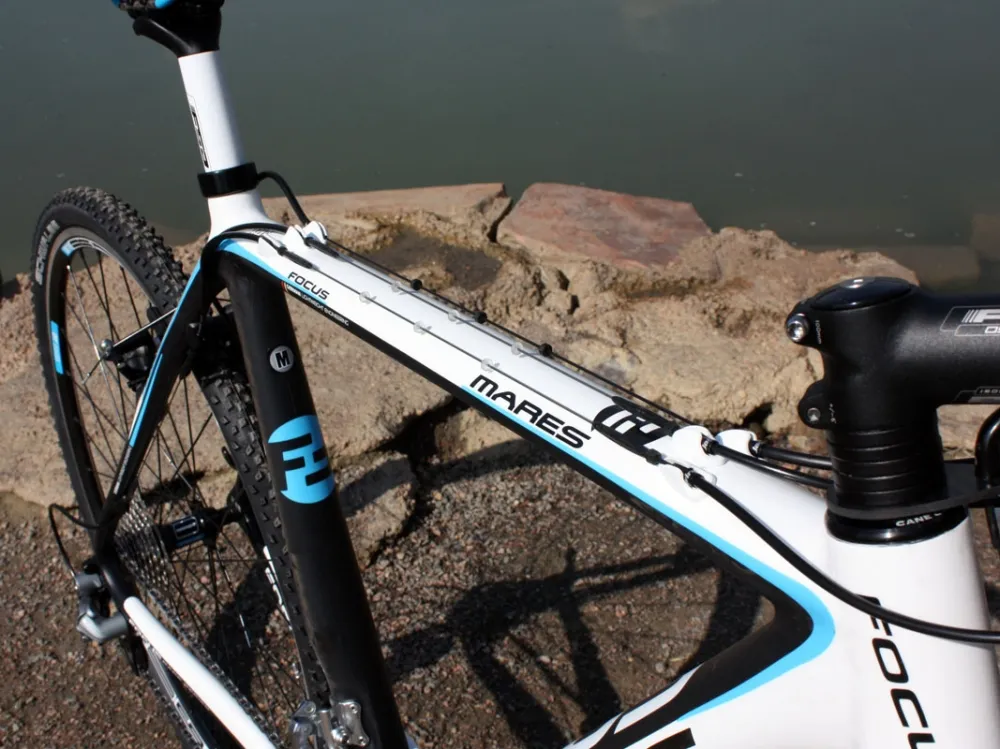Focus have followed a winning formula for their Mares CX cyclo-cross machine: grab the best chassis in your range, hang a collection of competition-worthy but financially sensible parts on it, and then slap a reasonable price tag on the whole lot. And what a fantastic chassis it is, too, offering up an excellent balance of weight, stiffness, and ride quality.
Ride & handling: Excellent balance of light weight, stiffness, and ride quality
Once the whistle blows and that critical first pedal stroke drops, the Mares answers with a reassuring surge of acceleration that's landed us excellent initial lap positions for every race in which we've used it. It's not just the stout rear end that efficiently transfers your power, either – when out of the saddle and violently wrenching on the bars, the front end fights twist admirably, too, lending a solid feel under stress that's often lacking in high-end aluminum frames (and even some carbon ones).
Admittedly, the Focus's frame isn't quite as insanely stiff or lively as Scott's ridiculously light Addict CX but in this case the Mares's efficiency comes with a much better ride quality at both ends courtesy of a well-tuned fork, smallish seatstays and a standard-diameter 27.2mm seatpost. On rougher courses it's easier to keep applying power while in the saddle and traction is improved, too, especially on sketchy corners where less yielding chassis would tend to skitter around. While still not exactly plush, we found ourselves feeling somewhat less beat-up after a 45-minute 'cross race.
Handling is unequivocally superb. Given their German roots, Focus have somewhat surprisingly given the Mares a more US-style 70mm bottom bracket drop instead of the Euro-typical 60-65mm figure. While this makes it tougher to pedal through corners, it also provides a lower center of gravity and more stable cornering manners on uncertain ground. Add in the 70.5° head angle and the Mares's handling manners are more set-it-and-forget-it than point-and-shoot.
Successive, tight, and slow 180-degree hairpins require a bit more muscling about as a result but the upside is increased confidence on loose off-camber corners where you can comfortably and controllably slide both ends and rest assured you'll still catch after the apex and power out of the turn. Aggressive riders in particular will likely find the handling to their liking.
Frame: Well thought out chassis with superb geometry and outstanding fork
Actual weight of our medium-sized bare test frame is a competitive 1,320g (2.91lb) plus another 490g for the matching fork. While that's neither the lightest nor the heaviest of high-end carbon 'cross models we've tested, Focus have clearly done a good job of making sure those grams pack a healthy and well-refined punch thanks to the enormous down tube, a slightly flattened and extra-broad top tube, a dramatically asymmetrical seat tube, a tapered 1-1/8 to 1-1/4in front end, and fat and tall chainstays, all anchored with a BB30 integrated bottom bracket.
Focus have clearly sweated the 'cross-specific details, and that's not surprising when you consider the company's heritage. Focus was founded in 1992 by three-time 'cross world champion Mike Kluge, and current product manager Jörg Arenz is a former German national champion as well. Mud clearance is very good at all corners, there's no shelf behind the bottom bracket on which debris can accumulate, the broad and level top tube makes for easier shouldering, and the cables are run along the top tube to help protect them from contamination.
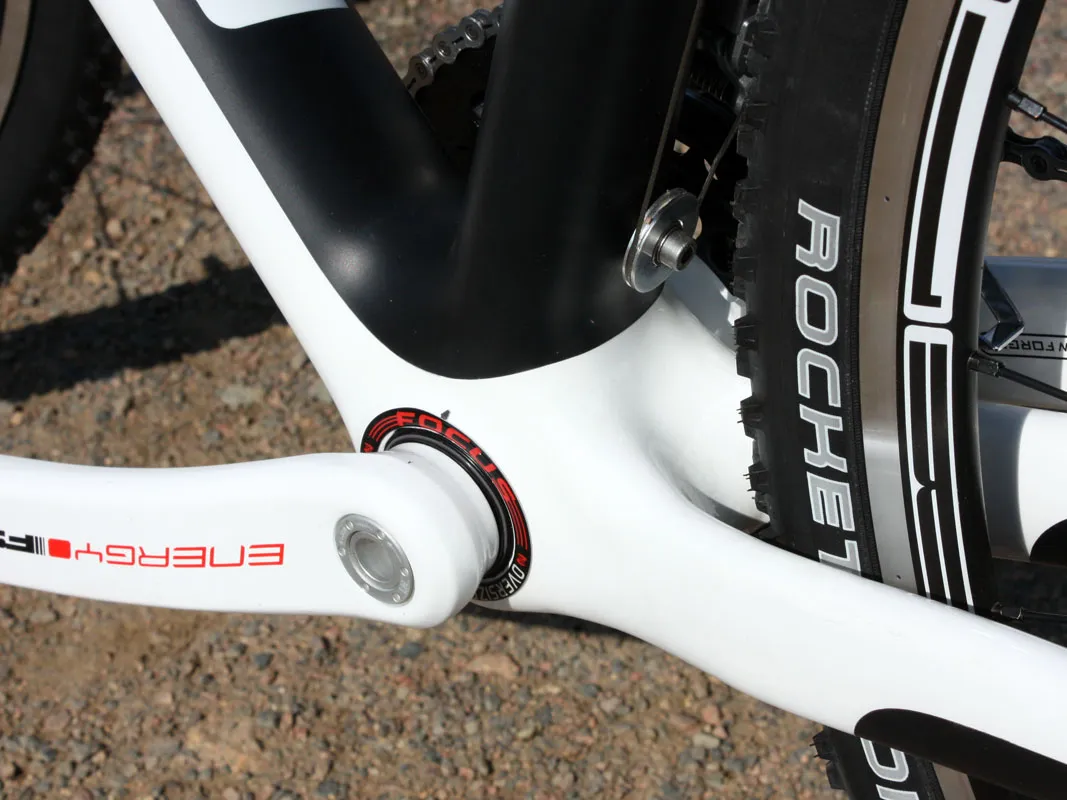
Equipment: Sensible race-ready build that won't break the bank
While Focus offer their Mares Carbon frame with SRAM Force and carbon wheels, we opted for the second-tier option and its more budget-friendly US$2,700 asking price. Included in the package are Shimano's latest Ultegra group, DT Swiss R 1900 alloy clincher wheels, FSA Energy BB30 cranks, Avid Shorty 4 cantilevers, and aluminum cockpit components from both FSA and Focus house brand Concept. Total weight as tested here (without pedals) is a reasonable 8.7kg (19.18lb).
We've little to complain about functionally regarding the Ultegra transmission. In typical fashion, the carbon bladed Dual Control levers reliably rattled off shift after shift with nary a peep uttered throughout and the (white!) hollow-forged FSA Energy BB30 cranks integrate seamlessly with smooth changes across the 'cross-specific 46/36T gearing.
However, we still have some reservations about Shimano's latest Dual Control levers on a 'cross bike as the shift lever internals are dangerously exposed to the elements and prone to jamming if you happen to stuff it in a sandpit. In addition, the lever throws are very light and long, which can make for somewhat awkward gear changes when you're getting bumped around. While we're fine with Ultegra on the road, we'd rather have seen SRAM's lighter and more positive-feeling Rival group bolted on here instead.
The DT Swiss R 1900 wheels and accompanying 35mm-wide Schwalbe Rocket Ron clinchers are excellent for training, with a solid and durable build, lots of air volume to help float over the rough, and ample grip courtesy of the tall and openly spaced knob pattern. However, the rear hub does with a conventional pawl mechanism instead of DT Swiss's legendary star ratchet setup, the wheels themselves are on the heavy side, and the Rocket Ron's tall knobs tend to squirm on harder surfaces.
It's a great initial setup for getting into the sport but more serious racers are likely to want to spend a little more money for a set of proper tubulars – and drop nearly a pound-and-a-half in rotating weight in the process, too. We commend Focus's decision to forego the currently fashionable wide-profile brake in favour of Avid's latest Shorty 4 cantilevers. While offering less rim and mud clearance than Euro-style stoppers, the Shorty's low-profile design offers up far more power with less hand effort, plus better adjustability to boot.
Gripes are few and far between. We could do without the gimmicky carbon fiber front housing stop, which lacks any provision to lock its position on the steerer tube and requires an off-center position if the stem is run even modestly low, and while the top tube-routed cables help protect them from contamination, it'd be nice to see integrated barrel adjusters of some sort for the brakes and front derailleur to ease fine tuning. In addition, we'd prefer to see a second set of bottle mounts on the seat tube instead of the single set on the down tube, and the frame finish seems a bit prone to chips.
